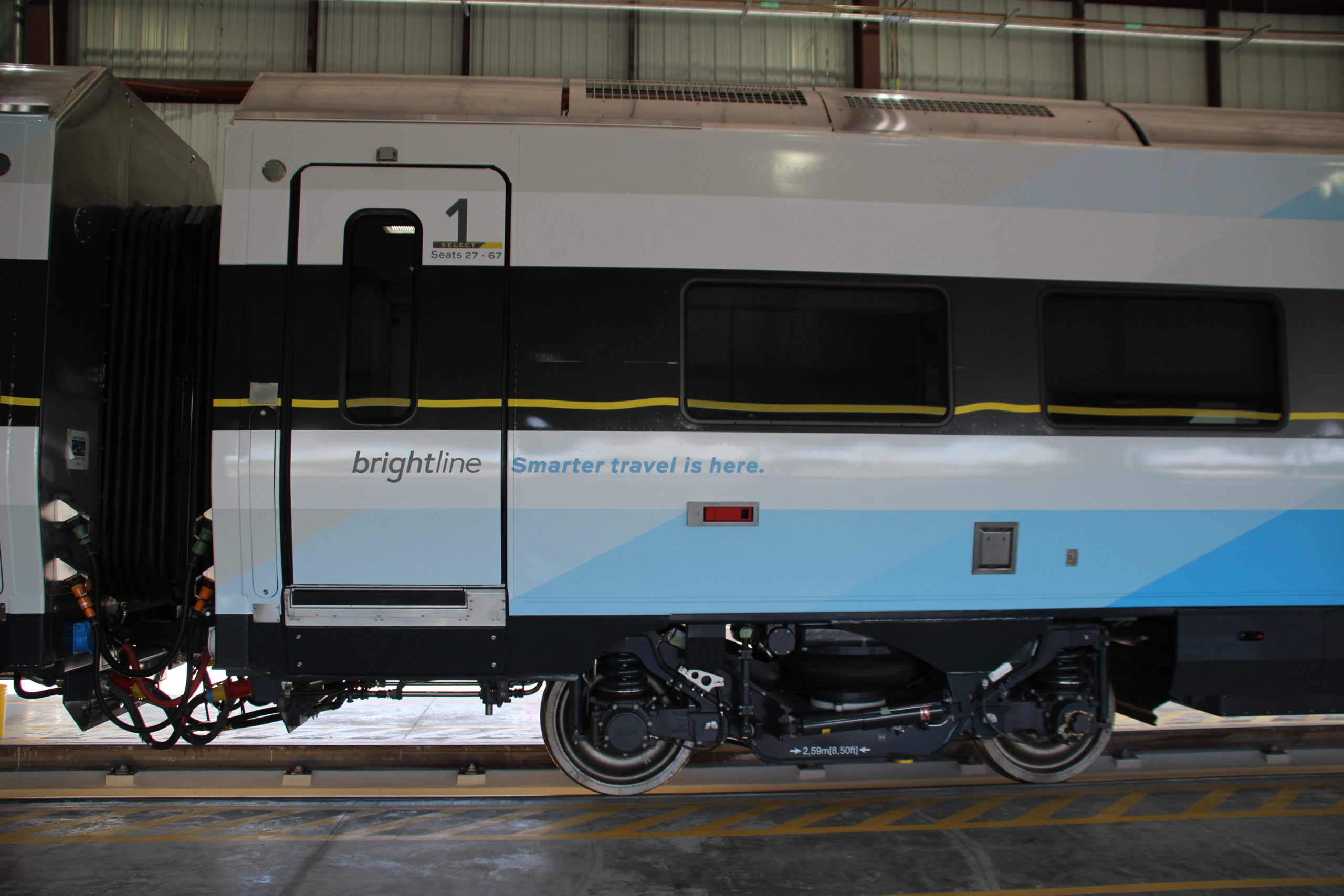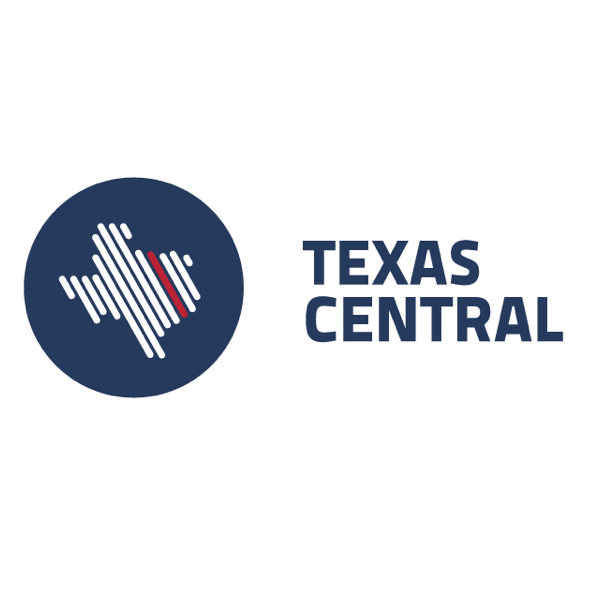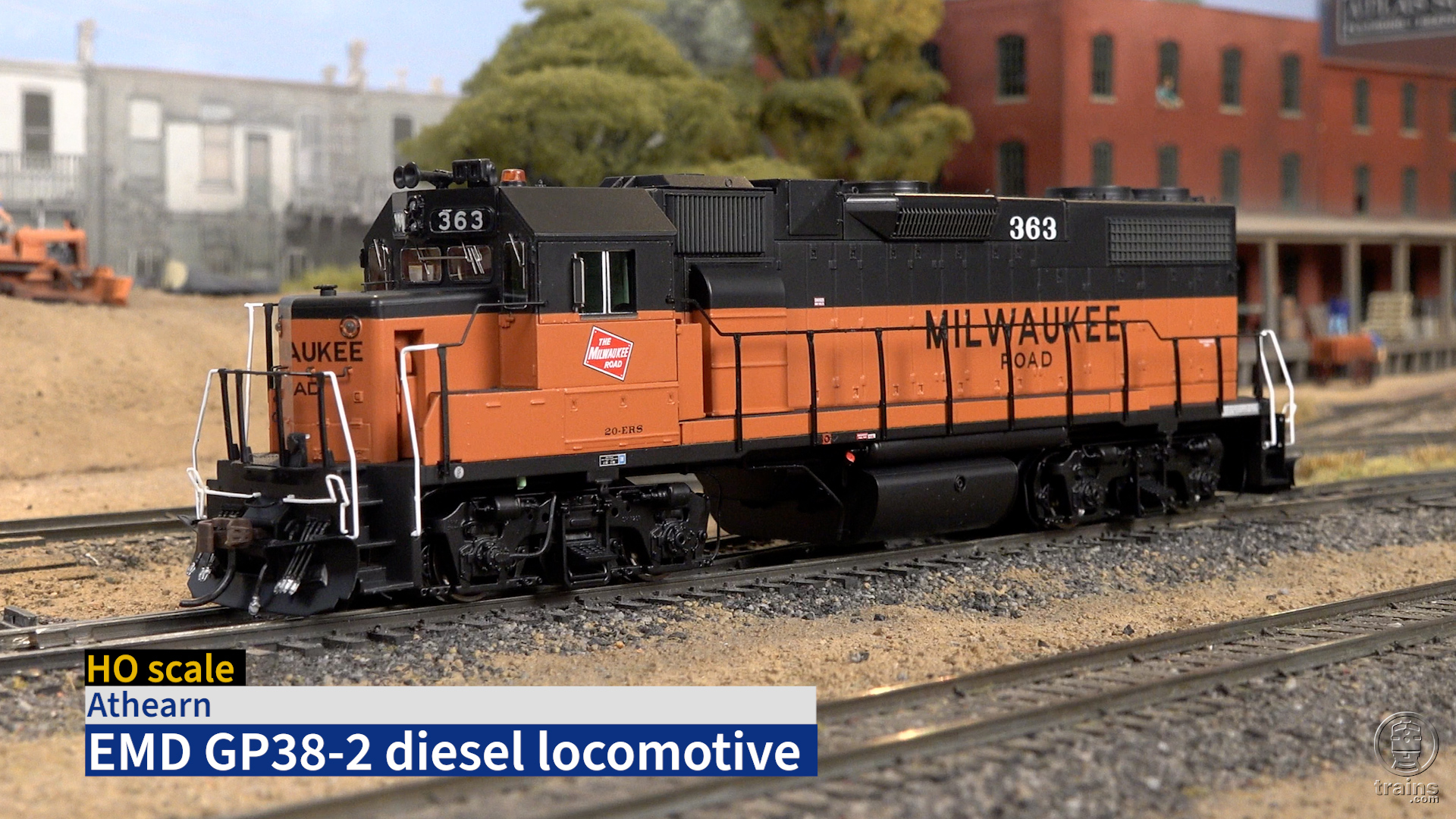
SACRAMENTO, Calif. — Half-a-billion dollars in unanswered questions remain now that California officials are working with a new builder on a floundering, years-old passenger car order.
California Department of Transportation — Caltrans — officials say in a Wednesday news release that German railroad equipment manufacturer Siemens will build 137 single-level coaches in its Sacramento shops at a cost of $371 million. The announcement seems to officially replace a $551-million bilevel order to Nippon-Sharyo from 2012. Illinois’ Department of Transportation will receive 88 cars in the revised order. California will take 49 cars. Officials say production will begin in the next year.
But the announcement downplays production problems that had put an original order into question for years. Among the biggest of the unanswered questions is, “Who pays?” after a Sept. 30 deadline came and went for a consortium of states to spend $551 million in American Recovery and Reinvestment Act of 2009 funds. The money — or a portion of it — by law, has to be re-paid to the Federal government.
Nippon-Sharyo’s woes
California’s transportation department became the lead agency for a coalition of states that want to run new passenger cars on Amtrak trains. That group ordered bilevel cars, designed by the all-volunteer Next Generation Equipment Committee, from Sumitomo Corp. of America in 2012. States including Illinois and California had ordered a total of 130 bilevels. The first prototype of that design failed a crucial safety test at Sumitomo contractor Nippon-Sharyo’s Rochelle, Ill., plant in September 2015. A prototype shell buckled under the compression of the required 800,000-pound test. Nippon-Sharyo never publicly disclosed the cause of the failure, though the company immediately suspended work on the order, laying off 98 workers in its fabrication and welding shop.
During the past two years, the company repeatedly declined to answer Trains News Wire questions about the order. In January, a California official who was slated to speak before the Transportation Research Board on the bilevel order and project progress cancelled his presentation. When reached for comment, that official’s replacement said the state was in negotiations and couldn’t speak further.
Despite Caltrans’ absence at the research board conference in Washington, panelists who helped develop or manage design work spoke about the bilevels. According to these experts, there had been 243 design changes, at that time, on the bilevel cars. Each change may require months to process or as little as two weeks for urgent production needs. Bilevel designs were also the first produced by the next generation committee. Designs now include locomotives, diesel multiple units, and single-level passenger cars. Single-level passenger cars Siemens built for Brightline passenger service reportedly follow the next generation committee’s basic designs.
Old money returned
Much of the order was funded by grants from the Federal government as part of the economic stimulus embodied in the American Recovery and Reinvestment Act of 2009. By law, the state consortium needed to spend the money, or at least begin receiving completed passenger cars, by Sept. 30, 2017 — or return unspent amounts to the U.S. Treasury.
According to a 2012 Caltrans news release, Federal officials earmarked $808 million for the Federal Railroad Administration to use on new passenger equipment of which $551 million was set aside specifically for bilevel cars.
“California’s share ($168 million) of the grants is supplemented by $42 million from Proposition 1B, a transportation bond approved by California voters in 2006,” according to the news release.
A California representative tells News Wire that Caltrans only had to repay about $1.2 million and that the state spent $17 million on the project that the agency will not have to return. That representative says the remaining balance due on California cars will be paid for with the bonding measure. News Wire has asked for confirmation from other states in the Midwest coalition — Illinois, Michigan, and Missouri — for details regarding their understanding of the funding.
In a statement to News Wire, an FRA representative confirmed that California and Illinois had replaced Nippon-Sharyo with Siemens.
“Since the ARRA funding deadline has passed FRA is unable to confirm the funding sources each state intends to use to complete the passenger car procurement,” the FRA representative wrote in an email.
Despite the problems, California officials insist Wednesday’s announcement was good news.
“This contract is moving full speed ahead and that is good news for Californians, both in terms of job creation and better passenger rail service,” Caltrans Director Malcolm Dougherty says in the California news release. “Caltrans and IDOT are ready for these new railcars to provide additional seating capacity for our busy trains and support planned improvements to passenger service.”
UPDATED: Full story write-through, Nov. 9, 2017, 3:05 p.m CT; FRA comment on funding. 3:41 p.m. CT













Talgos would’ve been a good choice..Barriing that they should’ve gone with Alsthom because they already had a proven bi’level car.
Although this is by now old news, the real issue here that remains unanswered is what happened to the oversight by FRA to ensure this project met its contractual commitments of production on a timely basis? Given the number of firms with a history of successfully building intercity and commuter bi-levels, was their any logical reason for FRA to pick the lowest bid by Sumitomo? Despite that firm’s ability to re-engineer our patents for bi-level commuter cars, how was it that Sumitomo and its sub-contractor, Nippon Sharyo, so decisively failed?
Just like NYC banned Bombardier from bidding on a new subway order due to past performance issues, so should we now ban Sumitomo and Nippon Sharyo from bidding on intercity and commuter equipment.
When will somebody delve into the overall issue here re passenger equipment? The Acela was overbuilt, over cost, and was plagued for several years with equipment performance issues. Now, after but 17 years, Acela requires replacement, while the Budd Amfleet keeps rolling on since the mid-1970s! CAF is still far behind in its order for Amtrak equipment, which by the way, does not even include replacements for long distance coaches and lounge cars.
what a waste of time and money. Just because of trying to get it cheap in the first place
what are the stress test differences between
the curremt nippon sharyo cars in service
and the failed test car?, if the current cars
in service are safe worthy, why wasn’t that
design used? instead of pie in the sky?
The contract with Nippon Sharyo should have been cancelled years ago. As a former senior purchasing contract officer, the contract was in breach long ago with key dates of performance missed. Incompetence all the way around. Furthermore, how did/was Siemens selected to continue this order?
Great idea, Mr. Gonzales. Let’s see if anyone at Trains is paying attention.
Welcome to Brownsylvania. Why take 49 cars from one source and the balance from another source? One source simplifies maintenance and parts supplies. But what the heck it is just the taxpayer’s money, and I’m one of them. Then pour gazillions more $$$$ into a toy train set going from Nowhere to Who Ever Heard of this Place, that nobody will ride. Now the finger pointing begins and no answers forthcoming. Business as usual in the Tarnished (formerly Golden) State. At least they will be imported from here, not like our last several bridges imported from India and China.
This sort of thing is so common. But the question is WHO PAYS? Nippon-Sharyo and Sumitomo should be on the hook for the money. They had a contract they completely botched and they should refund the cost to the states involved. A
All in all, this is good news, the current California (bi-level) and Illinois (single level) short distance cars are 20+ years old.
Mr. Dahlsten, I understand your point. The person fired maybe a whole company, Nippon-Sharyo since they said they would and could deliver, but didn’t.
The person responsible for a similar debacle involving freight cars for a privately owned company would be out of a job. Has anybody been fired for this?
Designing for the NEC isn’t appropriate for the Midwest, California, and elsewhere. This is all the more true since the NEC needs multi-level cars for maximum capacity in its role of meeting travel demand rather than extorting higher fares, “maximizing revenue,” where supply is limited. Choosing single-level cars is a step backward, however expedient for a deal; and Illinois may as well rehab Amfleet and Horizon cars. Single-level cars generally weigh more per seat than bi-levels and consume more energy. Longer single-level consists needed for capacity may exceed HEP and m-u control limits as well as platform lengths, especially at stub terminals. Vestibule steps slow boarding and require on-board or station lift devices for mobility devices (wheelchairs) for non-NEC stations and for more cars.
Perhaps as this unfolds, it could be a topic for a full article from Trains, detailing the history, age of current equipment, age and type of equipment on similar systems thru the US and Canada, the woes of Nippon-Sharyo, and what led to this decision.
I understand how this look like a step, or even several steps backwards, I think there might be a few questions worth asking before playing the name game. 1) Is the purpose of these cars to replace or augment the existing bilevel car fleet in CA? The existing Capital and San Joaquin fleet is somewhere around 25 years old, and I assume the surfliner cars are of similar age. This service has been consistently growing it’s ridership. I don’t think there is enough available equipment to even do a rebuild of the existing cars. Remember, the Joint Powers Commission purchased former NJT comet cars a few years ago (single level) to meet the then current demand. 2) Given a potential existing car shortage, could bilevel coaches be borrowed from Amtrak? The car shortage on the national network is well documented, and I’d be surprised if there is. 3) Are there other car manufacturers that have a bilevel car available? I believe it’s Bombardier (I’m sure someone here knows for certain) who made the bilevels in use on systems such as ACE, Metrolink, MBTA and others, but that raises it’s own questions, namely, do those cars meet current crash standards? ACE equipment is 20 years old next year, so that leads me to conclude that most likely it doesn’t. It would make sense that if it does CA and IL would have talked with Bombardier a long time ago. This is ultimately what sunk Nippon-Sharyo, who made the current operating bilevel cars in use on the CC and SJ services. This leads to the final question. 4) Considering the above questions, is it really a case of unwise decisions in this instance, or a case of trying to make do with the currently available options, even if not ideal, but still able to fall in FRA/DOT guidelines?
This is not news. Illinois made this announcement months ago.
Excellent news!
Still don’t understand why Nippon Sharyo couldn’t figure our how to build a railcar!!!
Narrow seats and wide aisles ala Brightline. Not estimated delivery dates?
Yes, the cars replace the Rochelle cars. They can be engineered and built rather quickly as they are based upon a proven design. The key delay will probably be the the interior details that have to be ordered from suppliers, or even the suppliers of the suppliers.
Are the bodys stainless steel?
It’s kinda unrelated, but I’m wondering if we are seeing a transition in manufacturing. Caltrans has taken delivery of at least one of the Siemens Sprinter locomotives. What with EMD and GE already saying they are expecting curtailed production this year, will Siemens start playing a bigger role in locomotive manufacturing? Lest 1 forgets GE with its U-boats and what it meant for Alco. The one who forgets history is bound to repeat it…
Do these replace the cars that were to be built in Rochelle, Il? If so wern’t those cars two level design? Apparently California and Illinois approved a completely new design? At least the mystery of what was going on has been revealed.
I have always endorsed single level cars over bilevels. The frail and handicap among us need not deal with climbing stairs or be confined to space on the lower level of one car.
Single level cars are more spacious and flexible for assignment in the height restricted East. And, they make possible whole through trains between New York and the Pacific Coast and Southwest.
The advantage of trains is the addition of cars as ridership demands rather than produce a larger vehicular unit. I was happy to learn of the cancellation of the bilevel orders in favour of Siemen’s single level cars.
What about cab-cars? The Caltrans trains currently operate as push-pull consists. Will some of these single-level cars be cab cars or will there simply need to be a locomotive on each end?
(I really hope for a charger locomotive on each end, it will look so much more streamlined – like the Bright Line in Florida, but I understand that would require purchasing twice as many locomotives. Then again, since there will need to be more passenger cars to equal the same capacity as the larger bilevel cars, perhaps more than one locomotive will be needed… and it would certainly help accelerate the trains faster, resulting in faster schedules…)
Interesting. I don’t think Caltrans ever bought any new single level cars before. As far as I know, the Pacific Surfliners, Capital Corridor and San Joaquins all use bi-level cars for the most part.
Surfliners presently running with bi-level cars. New cars represent a decrease in capacity unless train lengths increased. Also could affect station platform lengths and possibly raise locomotive and siding concerns.